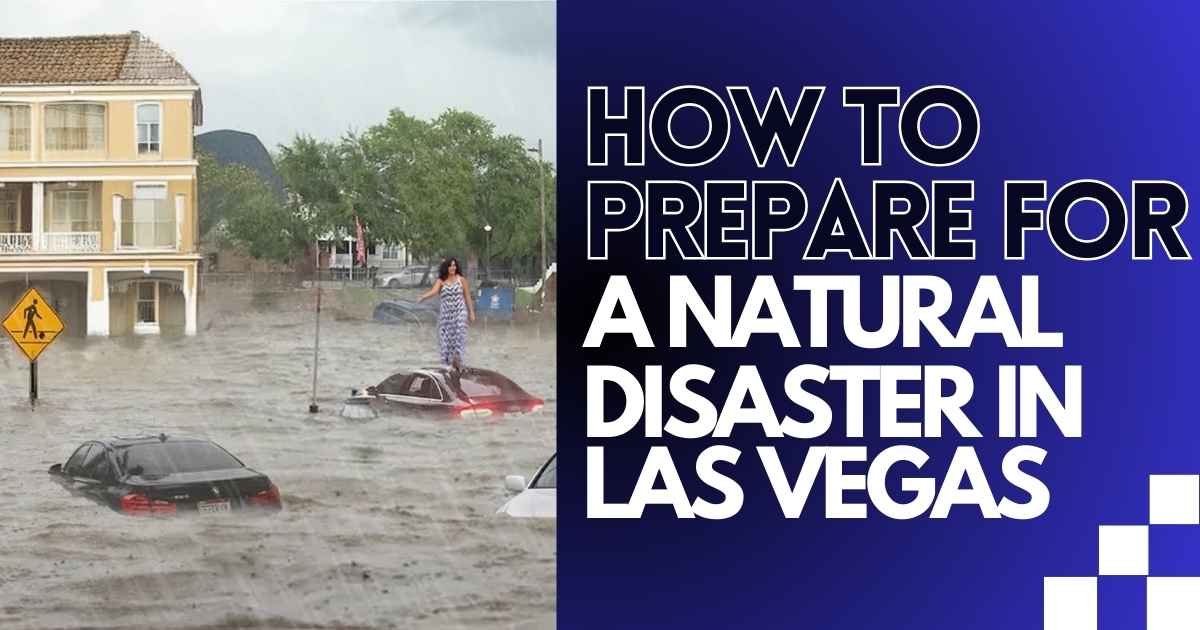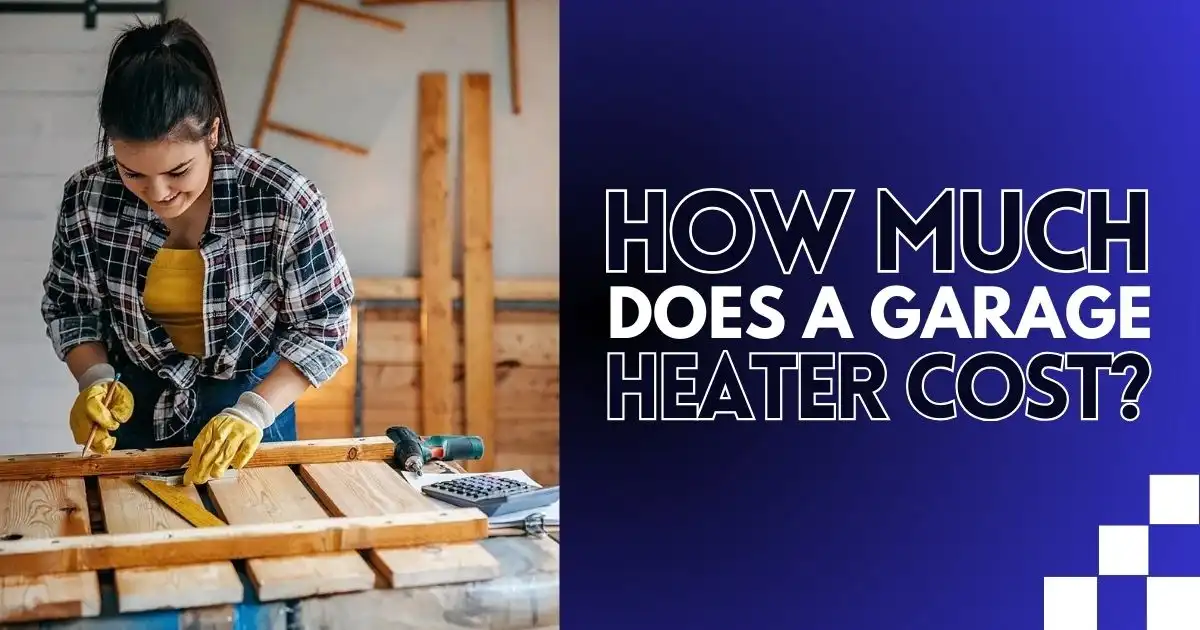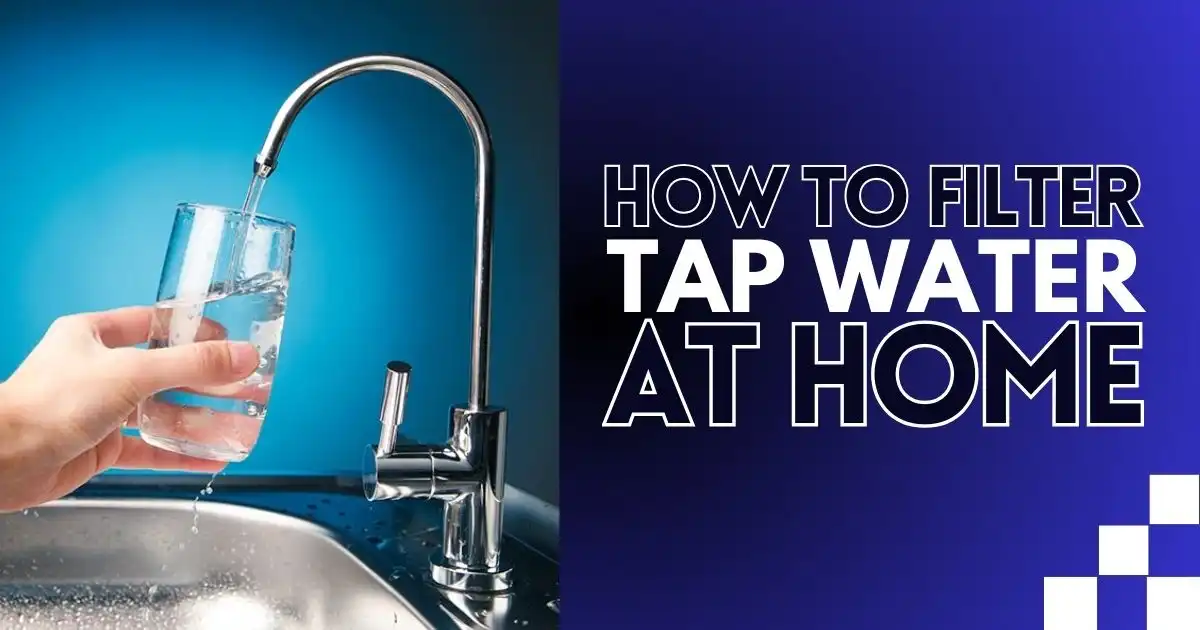Las Vegas continues to face 25% growing environmental challenges, reflecting broader global trends.
In 2024, Las Vegas hit a record high of 119°F, increasing wildfire risks in nearby areas. As climate change intensifies, Las Vegas faces growing natural threats, highlighting the urgent need for better disaster preparedness and resilience.
While you can’t predict when a natural disaster will happen, you can protect your finances, belongings, and loved ones by being prepared. With some planning, you can strengthen your home, secure your family, and increase your ability to recover quickly if a disaster strikes.
The Importance of Being Prepared for Emergencies
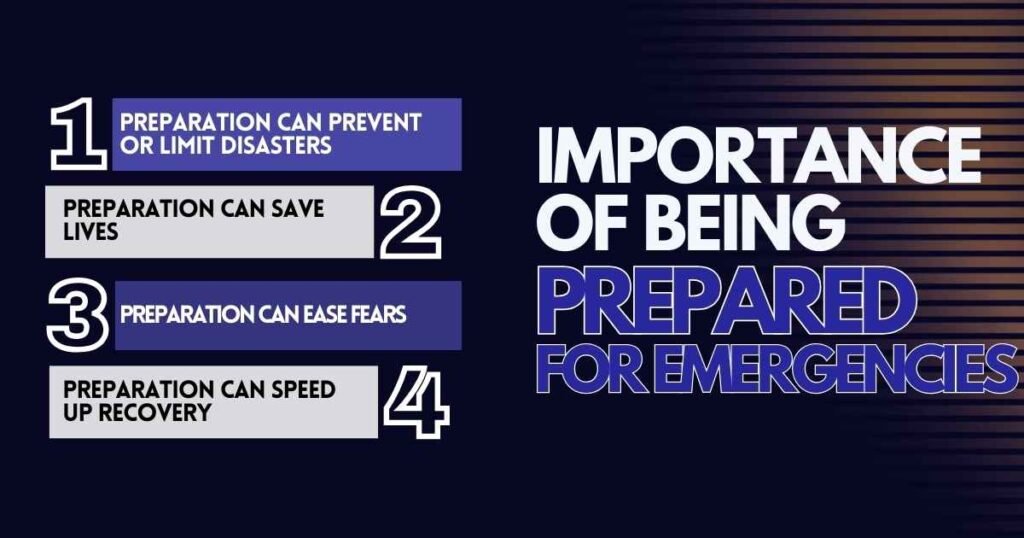
Being ready for a crisis can be the difference between surviving and losing everything. There are many benefits to being prepared for emergencies.
Here are some key ones:
- Preparation Can Prevent or Limit Disasters: Taking steps like fireproofing, using earthquake-resistant building methods, and having flood control measures can help prevent or reduce the impact of disasters. By finding weak spots and acting ahead of time, some risks can be lowered or even eliminated.
- Preparation Can Save Lives: Being ready for emergencies can save lives. Having escape routes, enough water and food, and emergency shelters can keep people safe during and after a disaster.
- Preparation Can Ease Fears: Planning ahead can reduce fear and stress by giving clear guidance in uncertain times. Knowing what to do and where to go helps people and communities deal with tough situations better.
- Preparation Can Speed Up Recovery: While disasters can cause losses, good planning can help ensure those losses aren’t overwhelming. Keeping important documents safe, having plans for succession, and knowing where to relocate can help speed up recovery and reduce long-term problems.
9 Steps to be Prepared for Natural Disasters
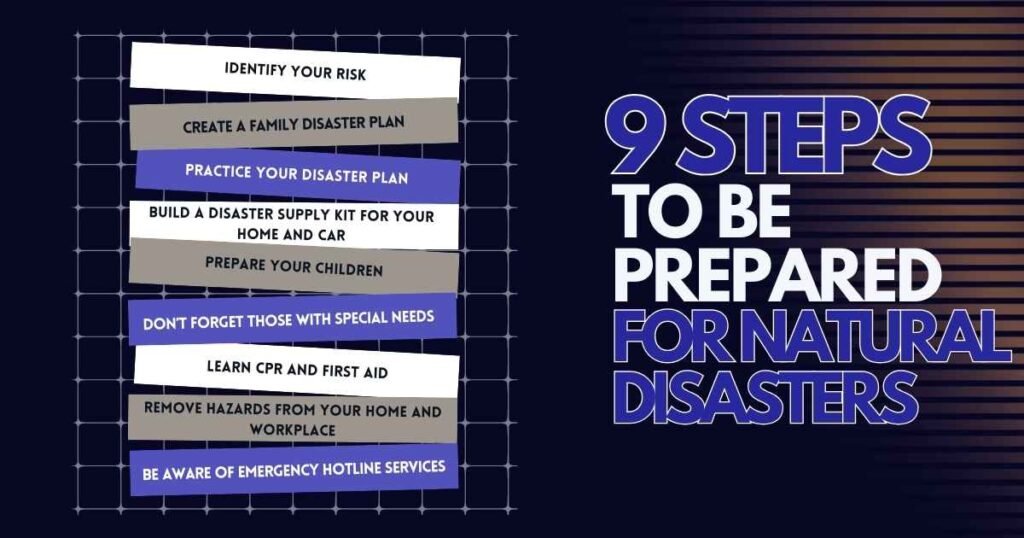
1. Identify Your Risk
When it comes to mapping and understanding hazards in Las Vegas, there are several valuable resources and strategies that local governments, businesses, and residents can use to enhance their preparedness:
- Contact the Southern Nevada Regional Planning Coalition (SNRPC) GIS Portal: The SNRPC GIS Portal is a key tool for getting GIS data specific to the Las Vegas Valley. It offers maps on land use, zoning, transportation, and environmental resources. Local governments, businesses, and residents can use this data to better understand the area’s landscape and hazards, making it essential for planning and disaster readiness.
- Utilize Free Online Mapping Tools: There are free online tools that provide data and maps for specific areas or hazards in Las Vegas. For example, the EPA’s MARPLOT, part of the CAMEO software suite, is commonly used to plan for chemical emergencies. These tools help identify risks and plan responses, especially in high-risk areas.
- Establish a Shared GIS Service: Clark County and the City of Las Vegas could work together to share GIS data on emergency services, zoning, and land use. By combining resources, they could use up-to-date maps to improve urban planning, emergency response, and public safety. This partnership could include shared servers and data, giving both access to more accurate GIS information.
- Partner with Local Universities: Las Vegas has several colleges and universities with urban planning and geography programs. Reaching out to them can involve students in identifying hazards and creating risk maps. Students can help develop accurate maps as part of their coursework, benefiting both the community and their education.
2. Create a Family Disaster Plan
Your family needs a plan that tells everyone where to meet if you have to leave your home, who to contact out-of-state, how to get emergency updates in your area, and how to care for your pets. Each family member should have a copy of the Family Communications Plan.
Here’s how to create your Emergency Plan in three easy steps:
- Talk with your family or household members about the types of emergencies that could happen where you live, work, and spend time.
- Assign roles to each person and decide how you’ll work together as a team.
- Practice and go over your plan regularly to make sure everyone knows what to do.
3. Practice Your Disaster Plan
After you’ve made a plan with your family, practice it. Begin by having everyone meet at a chosen spot outside your home, just like you would after a fire or when an earthquake stops.
- Learn how to respond in any disaster situation—stay indoors or leave the area by car.
- Make sure you know the right evacuation steps and routes to keep your family safe.
- Ensure everyone in your family understands these procedures and knows the evacuation routes.
4. Build a Disaster Supply Kit For Your Home and Car
If you’re stuck in your car or need to take care of yourself at home or work until help comes, it’s important to have a disaster kit. For natural disaster survival, your kit should include essential items like non-perishable food, water, and first aid supplies. These will help you stay prepared and handle emergencies, keeping you safe until help arrives.
Here’s a basic Emergency Supply Checklist:
- Water (1 gallon per person per day)
- Food (non-perishable, easy-to-prepare)
- Light (flashlight)
- Communication (battery-powered or hand-crank radio)
- Medical supplies (first aid kit, medications)
- Tools (multi-purpose tool)
- Hygiene items (sanitation and personal hygiene products)
- Important documents and a map of the area
5. Prepare Your Children
Talk to your kids about the risks and what your family will do if a disaster happens. Teach them about natural hazards like earthquakes, hurricanes, tornadoes, severe storms, ice storms, and blizzards, and explain what actions to take during these events. Make sure they know fire safety steps and understand what to do if there’s a fire. Also, teach them how to respond during emergencies at school.
Here are some simple tips for school emergencies:
- Stay calm and pay attention
- Don’t go to the school
- Don’t call the school
- If your child texts or calls, help them stay calm
- Keep your contact and emergency information up-to-date
- Have a photo ID ready
6. Don’t Forget Those With Special Needs
It’s important not to forget about infants, seniors, and people with special needs during a disaster. These individuals might need extra help because of their specific needs.
Tips for People with Disabilities/Special Needs:
- Make sure your emergency kit is well-organized, portable, and has all the essential items easily accessible.
- Label any special equipment with clear instructions for emergencies.
- Create a checklist of important needs and share it with your support network, keeping a copy in your kit.
- Wear a MedicAlert® bracelet if you have allergies, and keep a list of medications in your kit.
- If you rely on life-sustaining equipment or care, arrange for regular checks during emergencies.
- Ask for help from others during emergencies, and let them know about your needs.
- Carry a personal alarm to get attention if needed.
- Be aware that stress during emergencies can affect medical conditions.
7. Learn CPR and First Aid
Preparing for natural disasters means learning CPR (Cardiopulmonary Resuscitation) and first aid. These are emergency procedures used when someone isn’t breathing or their heart has stopped.
Knowing these skills helps you stop a situation from getting worse. In some cases, if a person doesn’t get basic first aid right away, their condition can quickly get worse. Giving basic care can help keep the person stable until emergency services arrive.
Here’s a Quick Step-by-Step CPR Guide:
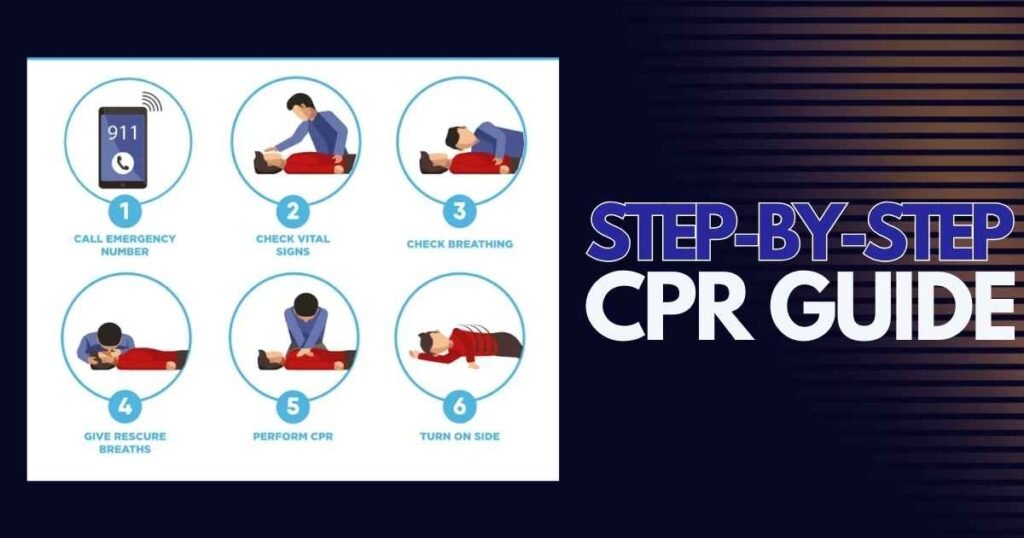
If the person is unresponsive and not breathing or only gasping, call 9-1-1 and get the necessary equipment, or ask someone else to do it. Don’t hesitate; it’s always better to call for help, even if you’re not sure about doing CPR.
8. Remove Hazards from Your Home and Workplace
Preventing injuries or illnesses at work starts with finding and fixing possible dangers. You can do this by following four simple steps to prepare for a natural disaster:
- Identify hazards in your workplace, such as heavy lifting, cluttered areas, working at heights, faulty machines, chemicals, loud noises, and poor workspace design.
- Use methods like talking to workers, inspecting the workplace, checking machines, and reviewing injury records to find these hazards.
- Use checklists to systematically evaluate risks related to tasks and equipment.
- Focus on fixing the most serious hazards first, considering their potential harm, likelihood, and how often workers are exposed.
- Whenever possible, aim to remove hazards or address them in a way that doesn’t create new risks.
9. Be aware of Emergency Hotline Services
Stay informed about emergency hotline services available in your area so you can respond to a disaster promptly. Below is a list of essential emergency hotline services as essential aspect on how to prepare for a natural disaster:
| Emergency Contact | Description |
| 911 | For immediate, life-threatening emergencies, dial 911 to connect with police, fire, and medical services. |
| Clark County Office of Emergency Management (702) 455-5710 | This office coordinates disaster response and recovery efforts. They can be reached for information on evacuation routes, shelters, and other emergency services. |
| Nevada Division of Emergency Management (DEM)(775) 687-0300 | The state’s DEM offers support and resources during large-scale disasters, including coordination with state and federal agencies. |
| Las Vegas Fire & Rescue (702) 383-2888 | For fire emergencies or incidents involving hazardous materials, contact Las Vegas Fire & Rescue. |
| American Red Cross – Southern Nevada Chapter (702) 791-3311 | Provides emergency relief services, including shelter, food, and medical assistance during and after disasters. |
| NV Energy (702) 402-5555 | For power outages and electric emergencies, contact NV Energy. |
| Las Vegas Valley Water District (702) 870-4194 | For water supply issues or emergencies, contact the Las Vegas Valley Water District. |
How Can You Help Others Be Prepared?
You can help others get ready for disasters by sharing important information, offering practical help, and building a strong community. Teach them why disaster preparedness matters, assist in creating emergency plans and kits, and guide them in identifying hazards and setting up communication plans.
Consider organizing workshops, volunteering with local response groups, and sharing useful resources to encourage others to take action. By setting a good example and raising awareness, we can create stronger, more resilient communities. For quality help, reach out to Vegas Plumbing Pros.
Final Thoughts
Preparation is key during uncertain times. By taking steps to get ready for a natural disaster, we protect ourselves, our families, and help make our communities stronger. Making a family disaster plan or joining in emergency response efforts, every action matters in keeping us safe. Let’s come together in our commitment to be prepared, knowing we can face any challenge as a united community.
FAQs
What are common natural disasters to prepare for?
Natural disasters include hurricanes, tornadoes, earthquakes, floods, wildfires, tsunamis, and severe storms. It’s important to prepare for the types of disasters that are most likely to happen in your area.
Where can I find more information on preparing for natural disasters?
You can find helpful information on government websites, through emergency management agencies, and from organizations like the American Red Cross. Local community centers and libraries may also offer educational materials and workshops on how to prepare for natural disasters.
What is the most important thing to do to prepare for a natural disaster?
Having an emergency preparedness kit is important for keeping your family safe and is one of the best ways to prevent injury in a disaster. Include essentials like water, non-perishable food, a first-aid kit, flashlights, batteries, important documents, and medications. Tailor the kit to your family’s needs, including supplies for pets or infants. Regularly update the kit, and also have a plan for where to go and how to communicate during an emergency.
How can we prepare for a natural disaster?
We can prepare for a natural disaster by making an emergency plan and putting together a basic kit. Plan where to meet, how to stay in touch, and what to pack, like water, food, medications, and important papers. Regularly check your plan and kit to stay ready for any emergency.
